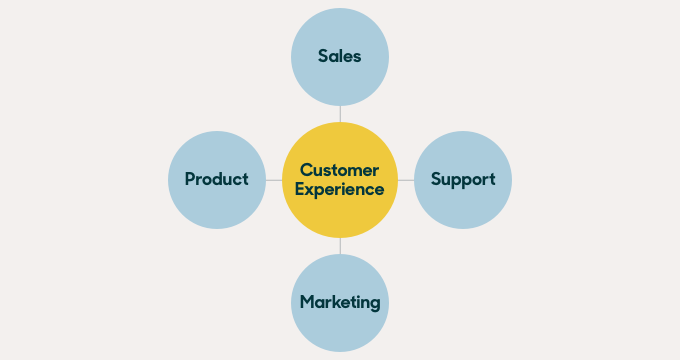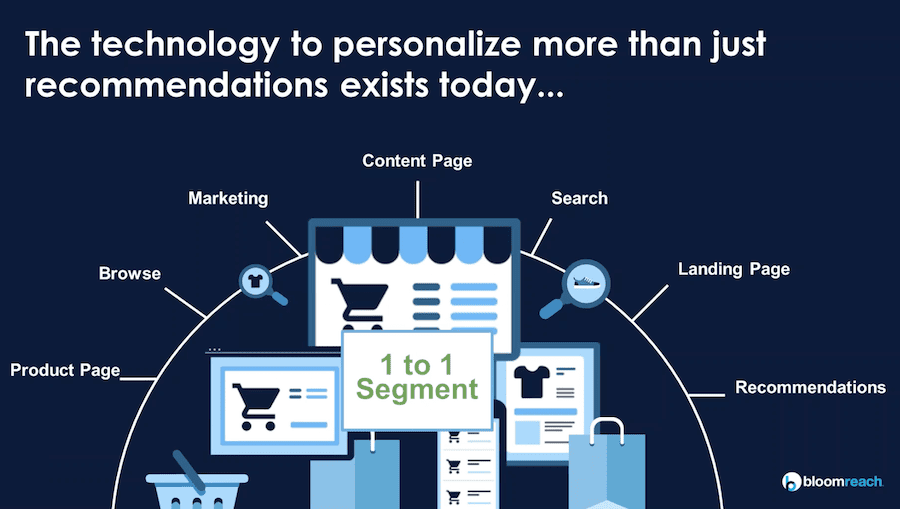No doubt about it: we are living in the age of digitalization. Our society is becoming more digital every day, with major consequences not only for our social lives, but also for the way we do business.
When it comes to marketing, the Customer Experience (CX) seems to be the holy grail everyone is focusing on. What is all the fuss about?
What is Customer Experience (CX)?
Customer Experience is not new, it always existed.
Even in the middle ages, market vendors had to stand out from their competition to convince their prospects to buy from them.
Potential buyers were given product samples and special conditions were provided to loyal customers.
It’s just that the digital age has radically transformed the way we do business and has created lots of new touchpoints which we all have to align for a consistent experience.
So customer experiences result from complex, convoluted journeys. These journeys extend from the initial search right through to after-sales.
Customer experience is about data, emotion, economics, visual cues, nostalgia, supply, demand, fashion, pop culture, aspiration, personal finance, self-image, desire and restraint. It’s a classic mix of art and science.
A good portion of the experience is controllable (think interface, assortment, price). But some aspects are wild cards, such as the influence of peers.
All of this is complicated by an influx of new channels over the past decade or two. In a survey of 150 UK marketers, over one third considered today’s complex customer journey landscape the single biggest barrier to delivering a consistently good customer experience.
….as the world is getting more complicated, with a lot more channels and people interacting with companies in multiple ways at multiple times, there is another level of complexity. And it means that it is more difficult to have insights from a single channel that are really reflective of what customers are thinking and doing.
Importance of Customer Experience
If you’re in retail or follow the industry, “customer experience” is everywhere.
My in-box — and I bet yours — has been bombarded with reports, studies and news stories about the embrace of achieving the ultimate customer experience.
So lots of people are talking about this subject. They have been for a while now, and with good reason.
[Fact #1] 90% of ecommerce executives believe that improving customer experience is fundamental to the future success of their businesses.
[Fact #2] 82% of the executives said a better experience would increase returns on investment, while two-thirds said improving the customer experience would lead to “greatly increased profits.”
[Fact #3] 42% of consumers said they would pay more for a friendly, welcoming experience, and 52% would pay more for a speedy and efficient customer experience.
Profits aside, another huge benefit of effective customer service is customer loyalty.
[Fact #4] 73% said that a good experience is key in influencing their brand loyalties.
[Fact #5]Consumers increasingly show loyalty to the retailers, brands and devices that consistently provide exceptional value and variety with minimum friction or stress.
How to Improve Customer Experience
1. The Aesthetic Customer Experience:
This is the art, and very much the world of merchandisers, though everyone needs to play a part. This is right-brain stuff, the poetry the soul of retailing.
👉 It is all about understanding your customers and showing them you know them through the story your brand tells.
Your aesthetic side understands what your customers mean to you and vice versa.
This is about relating to website visitors through text, video and photographs, using images to let users quickly scan information and share.
It means grouping and arranging products in an eye-catching, mind-pleasing way.
It’s about building a site that’s pretty, with well-crafted writing and gorgeous photographs. Looks count – a whopping 38% of visitors will stop using a site if content or layout is unattractive.
It’s about building online pages that help consumers understand what they’re getting and how it will affect their lives.
It’s also anticipating what the cool kids will buy and how products intersect with pop culture, social sets and world events.
It’s about inspiration and communication. It’s about being authentic.
2. Personalization and Relevance:
This is the science. This is where data and technology come in most prominently.
👉 Combining data and technology allows retailers to achieve another buzz phrase: “getting the right product in front of the right customer at the right time.” In short, it’s about relevance and personalization.
It ensures information is organised so users are not overwhelmed. Accenture’s Personalization Pulse Check shows 40% of consumers abandon and purchase elsewhere when presented with too many options.
It’s where digital checkout works, where product and non-product content loads quickly on every page. Speed is everything, over half of visitors will abandon a site that takes more than 3 seconds to load.
It’s about presenting each individual shopper with a visual array of products, sorted in a way that shows an appreciation of their style, tastes and preferences.
It’s about partnering with a shopper, showing you understand them, what they like and what they’re after.
That need not be rocket science, even adding more product categories or language support is a quick win that builds trust and reputation.
It’s about relying on systems that constantly learn. Systems that take the manual work out of presenting your best store to each individual online visitor.
It’s about being able to tell the customer what’s in-stock and how to get items that are not.
It’s providing a way to pick-up online orders or have in-store purchases delivered at home. It’s where returns are easy by mail, delivery service or in a store.
When the logistics work, customers get what they want, when they want it, with minimal hassle. Emolytics sums it all up nicely;
Fill their orders faster and more efficiently than your competitors. Offer good customer service that sees them go away smiling from every encounter with your firm.
3. The Transactional Customer Experience:
This is the most crass and brutal branch of the experience.
👉 The transactional customer experience is all about pricing, promotions and literally delivering the goods.
It’s the slice of experience that acknowledges that while customer experience can’t be only about the transaction, in the end, both the consumer and the retailer see a transaction as the goal. And, so yeah, it’s important.
This is where the art of the deal lives.
Consumers expect to be treated fairly. They want to trust the retailer they’re doing business with. If they see a price online, they expect to be able get that price in the store.
Various regulatory bodies, such as the UK’s FCA, also expect fair treatment across the board. Being unfair could even result in financial penalties. It’s basically not an option.
Consumers want good value. At the same time, shoppers have come to expect low, low prices, even for products that used to be expensive. A Deloitte study of US parents, found sales and competitive pricing to be the most important factors for back to school products.
But the discount game is a dangerous one for retailers. Constantly slashing prices obviously cuts into profit margins.
It’s also hard to beat Amazon on price, which brings us back to experience.
Some are taking that to a new level. The Hilton hotel’s app gives loyal customers control over what room they stay in, the amenities they use, it even opens the door for them. The online experience actually manages to outshine the face-to-face one.
No question, retailers must pay attention to the transactional customer experience. But the way to win against giants like Amazon is to look elsewhere, and pick the right spots.
The trick is to excel in the aesthetic and logistical side of things.
Conclusion
By fine-tuning the aesthetics and logistics, we can reinvent customer journeys.
That empowers us to ensure that ‘customer experience’ both as a phrase and as something we do, should be around for the long-haul. That’s a good thing.
Amidst all the hype and buzz surrounding the experience, one thing has become clear, ecommerce has reached a tipping point. It’s a given that consumers can get pretty much anything online, retailers must now go further.
Online shopping does not boil down to the mechanics of buying. It’s a multi-faceted, even sensory experience.
Digital shopping is so much more than a transaction. Retailers ignore that reality at their peril. It’s time to hone in on the experience, and show customers those efforts.
If you do not, they won’t hear you out there.
A certain amount of conviction is needed – an unwavering determination to do the right thing by each and every customer. This vision requires evangelization from upper management, deep insights on the customer journey, and strong attention to feedback.
Backstage, retailers already have the tools they need to make it all happen. Smart, AI-based solutions are on hand to transform online shopping.
Now comes the time to bring ecommerce to the next level, a remarkable and memorable experience — one that most importantly, consumers can barely resist repeating.
Along the way, we can rescue customer experience, in both name and practice.
Read next those customer success stories on Customer Experience:
-
[Success Story #1] Learn how The Vitamin Shoppe created a winning search experience meant by tailoring algorithms to serve its broad target audience with diverse wellness goals.
-
[Success Story #2] Bosch created personalized, unique experiences at country level, while aligning experiences globally
-
[Success Story #3] HellermannTyton leverages data and personalization to drive its digital strategy















